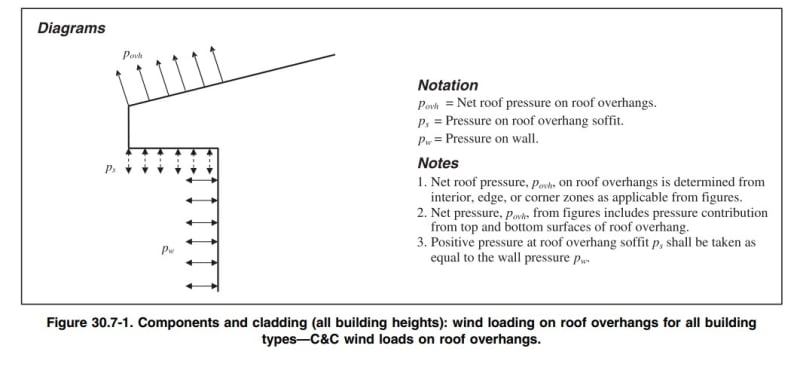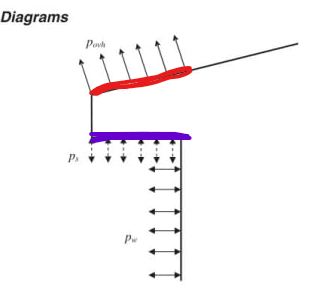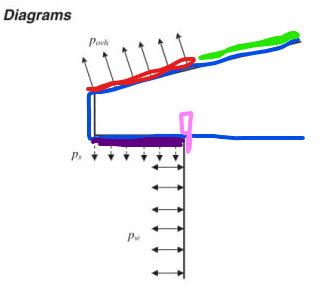masterdesign
Structural
- Nov 3, 2023
- 27
I understand the C&C wind pressure on roof overhangs is the sum of the pressures on the top and bottom surfaces.
The equation in ASCE 7 is p = qh*(Gcp-GCpi) where Gcp is defined as "the sum of the GCp of the overhang's top and bottom surfaces".
By defining GCp as the sum of the external GCp values for the top and bottom surfaces, it appears the intent is to cancel out GCpi. If GCpi were to be included, it would apply to each surface and should be combined appropriately with the corresponding external GCp. Then the pressures for each surface would be combined after that. Furthermore, in no case would it seem appropriate to sum the external GCp values and then apply the GCpi value singularly.
Also supporting that this may be an oversight is how poorly conceived Figure 30.9-1 (7-16) is. Looks like this figure hasn't been touched or the supporting text cleaned up since someone sketched it initially. This points to a lack of attention to this code section.
This seems very clear to me, but if so, why has this persisted from 7-10 to 7-16 to 7-22 without revision?
This thread asks the same question and did not get any traction. The one response essentially agrees with cancelling GCpi (the carry-on thought of including Gcpi for designing the cladding is analogous to calculating the pressure for a single surface).
The equation in ASCE 7 is p = qh*(Gcp-GCpi) where Gcp is defined as "the sum of the GCp of the overhang's top and bottom surfaces".
By defining GCp as the sum of the external GCp values for the top and bottom surfaces, it appears the intent is to cancel out GCpi. If GCpi were to be included, it would apply to each surface and should be combined appropriately with the corresponding external GCp. Then the pressures for each surface would be combined after that. Furthermore, in no case would it seem appropriate to sum the external GCp values and then apply the GCpi value singularly.
Also supporting that this may be an oversight is how poorly conceived Figure 30.9-1 (7-16) is. Looks like this figure hasn't been touched or the supporting text cleaned up since someone sketched it initially. This points to a lack of attention to this code section.
This seems very clear to me, but if so, why has this persisted from 7-10 to 7-16 to 7-22 without revision?
This thread asks the same question and did not get any traction. The one response essentially agrees with cancelling GCpi (the carry-on thought of including Gcpi for designing the cladding is analogous to calculating the pressure for a single surface).







